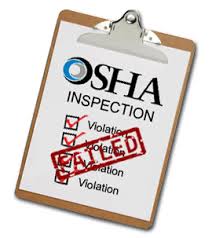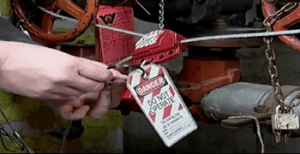Attorneys: Lockout/tag-out violations are costly OSHA violations
That was the message from two lawyers who spoke at the Environmental Health and Safety Summit.
“When do most often amputations occur? When someone forgot to lockout/tag-out and when there’s a lack of a guard. That’s when you’re going to see an amputation,” said Nelva Smith, of the Steptoe & Johnson law firm.
Plastics machinery, such as injection molding machinery, can cause serious injuries from pinching and crushing, especially in the mold clamping area.
“It’s to prevent serious injury or death. You should be aware of the standard and what your requirements are under the standard,” Smith said.
OSHA defines “amputation” broadly and is stricter than workers’ compensation, according to William Wahoff, a lawyer at the firm. “If it is the tip of the finger without any bone damaged, you still have to report it for OSHA.”
And Wahoff said amputations are likely to lead to OSHA inspections: 65 percent of reported amputations resulted in inspections, compared with in-patient hospitalizations, which lead to inspections in around 35-40 percent of the cases.
Smith and Wahoff gave an hour-long presentation about lockout/tag-out and machine guarding during the health and safety conference, held July 18-19 in Columbus. Both lawyers are based in Columbus.
OSHA uses the term “control of hazardous energy,” for what’s commonly called lockout/tag-out, Smith said, covering sources of energy such as electrical, mechanical, hydraulic, pneumatic, chemical and thermal.

“Why do we need to do it? Because during the servicing and maintenance of these machines and equipment, that’s where the injuries do occur, more often than not,” Smith said. “The unexpected startup or release of stored energy will usually result in a serious injury or death. Usually these are very complicated big machines, with a lot of working parts, a lot of sharp edges and pinch-points and that sort of thing. And if you’ve got a maintenance person working on a machine and a fellow employee doesn’t know it’s not locked out and just says, ‘Oh, I’m gonna hit the start button; I don’t see anybody.’ This is where it happens.”
Smith and Wahoff said manufacturers must have an energy control program and specific procedures for each machine. They recommend posting the step-by-step procedure for lockout/tag-out right on the machine, making it visible for employees and OSHA inspectors. OSHA will ask about the hazardous energy policy, even if they are on-site for another type of complaint, the lawyers said.
Wahoff said that companies train plant employees and maintenance staff; they should use OSHA’s hazardous energy control terminology, at least part of the time, so they know the right wording when an inspector questions the workers.
Smith added that the person who puts the lock tag on the machine must be the one who takes it off when the work is completed.
What about during “normal production”? Smith said that is not covered by lockout/tag-out.
“The problem we run into is, can we argue certain things are normal production and I don’t have to lockout/tag-out, because it can be a very complicated procedure to disconnect all of the sources of energy,” she said. Minor tool changes and adjustments and other minor servicing activities are OK, “if it’s routine, it’s repetitive and integral to the use of the machine, and you use alternative measures to protect that employee,” Smith said.
But Wahoff said OSHA does not consider the setup of dies to be “normal operation.”
Smith laid out the way to think about it: “If you want to make an exception to the lockout/tag-out procedure, am I putting an employee in a zone of danger? Are they having to put themselves in a machine? Are we having to bypass a guard? Is that really ‘normal production’?”


